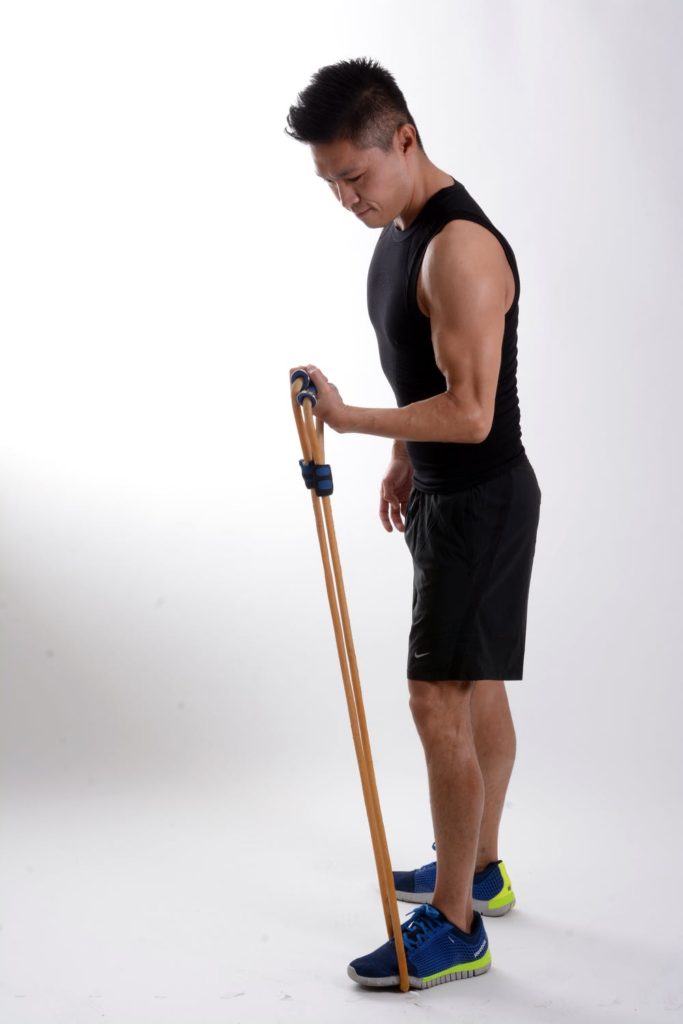Guest post by Dr. Brent Wells, founder of Better Health Chiropractic & Physical Rehab in Anchorage, Alaska
Whether you visit a chiropractor regularly or have never been to one, everyone can benefit from tips on how to strengthen and support their backs. And there are few better sources for providing tips than a practicing chiropractor.
If you regularly experience back pain, following these tips can both reduce the pain and help you to prevent pain in the future. Roughly 80% of all adults report back pain in their lives, and it is the most common reason given for people missing work. If you experience pain, these tips will help you to reduce the pain. If you are yet to suffer from back pain, following these tips might put you in the 20% of adults who manage to keep their backs healthy.

This one comes as no surprise – it is probably the most recommended health tip you will get from any doctor. However, when it comes to your back, regular exercise is the best way to keep your back healthy.

You can include regular stretches to help you work your back a little more often too. Doing some exercises while you are sitting at your desk can go a long way to decompressing your back over the course of the day.

Over the course of the day, you probably spend a lot of time sitting or staring down at your phone. Being tied to a desk most of the day does not have to be a reason why you suffer from back pain (now or later in life). Make a habit of sitting back or standing up and stretching. Taking a break at least once an hour will remind you to be more careful of your posture.
Hold your phone up when you look at it. Yes, we like to hold our phones down so that we can rest our arms, but this is very unhealthy for our necks. Instead of resting your arm, hold it up so that your head is up. Not only is this better for your neck, it can help build your arm muscles. It will also convince you to spend less time looking at your phone, which will be better for your eyes too.

After spending hours at work, most of us go home and plop down on the couch or another chair. Unlike the office, you are completely responsible for having furniture that encourages you to sit properly. Yet too few of us bother to make sure that our furniture encourages us to sit in a way that is healthy for our back.
Take the time to set up your computer desk in a way that is ergonomically friendly. Make sure to keep proper posture when sitting on your couch, chair at the kitchen table, or bar stool. Proper posture all day is one of the best ways to keep your back healthy.
It is definitely going to take time when you are at home, but it is worth it.
Use the Headrest
Another place where many of us spend a good bit of time is in our cars or other modes of transportation. If you drive to work, start using that headrest. Too many of us have a tendency to slouch even in the car. By putting the headrest to use, you will force your body into a better position for your back. This is not only good for your back, but it will help relieve stress and pressure from your neck.

This one is probably going to be one of the most difficult because most of us cross our legs automatically. Even if you cross your ankles, this is not an ideal position for your body. Put both of your feet flat on the ground with the knees at a 90-degree angle.
Crossing your legs may look good or feel comfortable, but it puts a lot of extra stress on your back. It also twists your body so that your spine is not straight. Without a desk in front of you, this is going to take you some time to get used to. However, start by getting used to sitting like this at a desk or table. Over time it will become a natural position for you, helping you stop crossing your legs even without something directly in front of you.

This is tur not only of backpacks, but purses too. Both of these tend to end up being catch-alls, and most of the things in there you don’t use regularly. Go through and prioritize what you need. Anything that is more than a pound or two in your purse probably is not necessary (besides your wallet).
If you can get by without the bag or purse, this is even better. Not only will you find you aren’t putting extra stress on your back and legs, you will quickly find that you really didn’t need most of the junk you’ve been carrying.

After sleeping, most of us feel a bit stiff. While you can’t control your movement in your sleep, once you wake, you can definitely start to work your back and core muscles. It doesn’t have to be anything serious, just a minute or two of stretching out your back, legs, arms, and neck can help you feel much better once you get out of bed.
Stretching is not only great for your body, it helps to wake you up and get your blood pumping. It is natural reaction to waking that many of us ignore in favor of hitting snooze one more time or rushing to get moving after hitting snooze one too many times.
Take a minute or two for that morning stretch and you will find that you are much more awake by the time you start your morning routine. Before long it will be nearly impossible to start without that good stretch first thing in the morning.


Dr. Wells founded Better Health Chiropractic & Physical Rehab in Alaska in 1998 and has been a chiropractor for over 20 years. His practice has treated thousands of patients from different health problems using various services designed to help give you long-lasting relief.
Dr. Brent Wells is also the author of over 700 online health articles that have been featured on sites such as Dr. Axe and Lifehack. He is a proud member of the American Chiropractic Association and the American Academy of Spine Physicians. And he continues his education to remain active and updated in all studies related to neurology, physical rehab, biomechanics, spine conditions, brain injury trauma, and more.
National Institute of Neurological Disorders and Stroke, Low Back Pain Fact Sheet (December 2014). Retrieved April 17, 2019 from the National Institute of Neurological Disorders and Stroke: https://www.ninds.nih.gov/Disorders/Patient-Caregiver-Education/Fact-Sheets/Low-Back-Pain-Fact-Sheet
S. Schroeder. Chiropractic Tip to Lower Back Pain – Fix Your Habits. Retrieved April 18, 2019 from The Joint Chiropractic: https://www.thejoint.com/texas/spring/spring-town-center-28043/226044-chiropractic-tip-to-lower-back-pain-fix-your-habits
Easing Your Tension Headaches: 7 Tips from a Chiropractor (December 8, 2017). Retrieved April 18, 2019 from Cleveland Clinic Health Essentials: https://health.clevelandclinic.org/7-tips-for-easing-your-tension-headaches/
Andersen, C. H. 28 Secrets Chiropractors Won’t Tell You for Free. Retrieved April 18, 2019 from Reader’s Digest, Everyday Wellness: https://www.rd.com/health/wellness/chiropractic-care/
Stay Well Secrets: Tips from a Chiropractor to Get Rid of Neck and Back Pain. Retrieved April 18, 2019 from Today, Health & Wellness: https://www.today.com/health/tips-chiropractor-ease-back-pain-I541115
